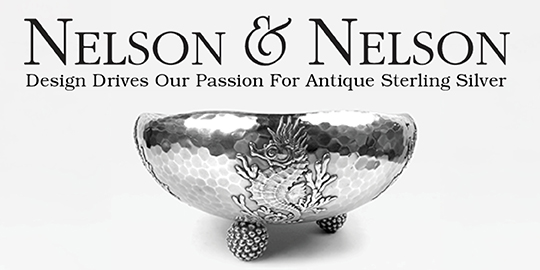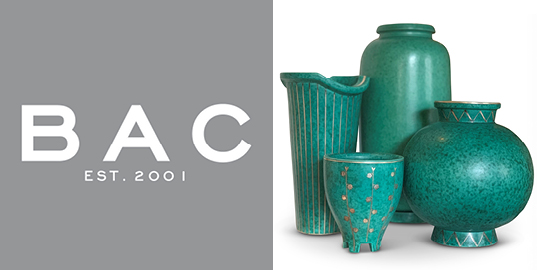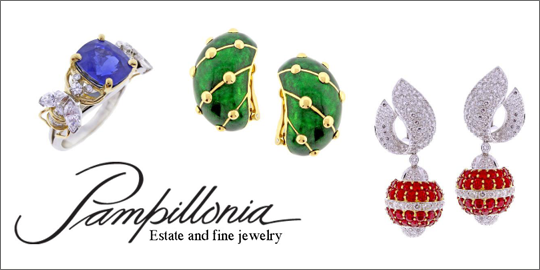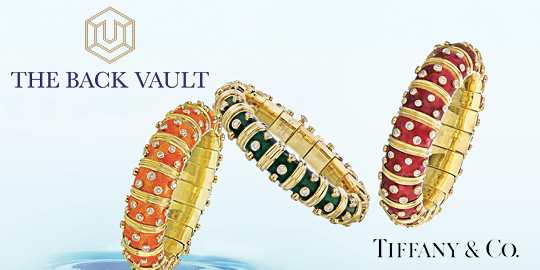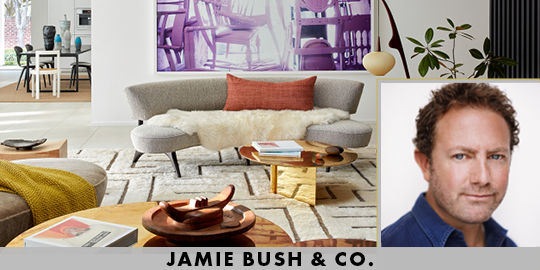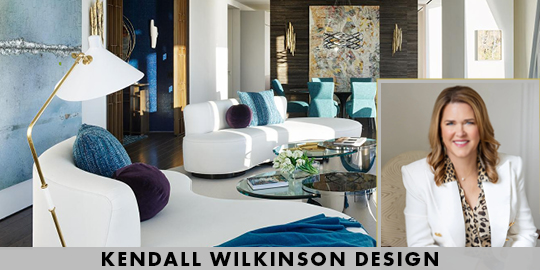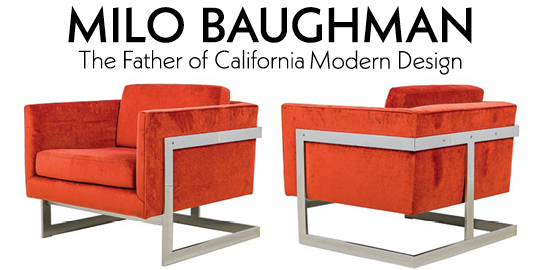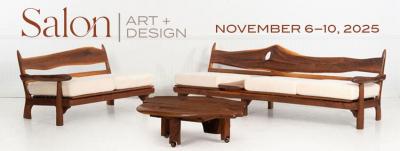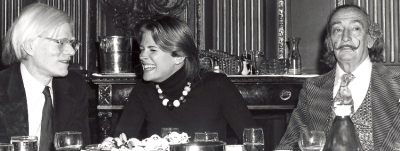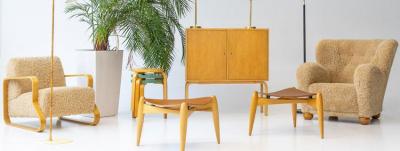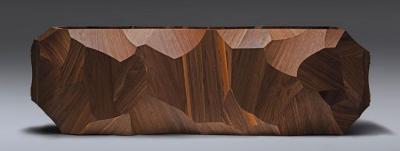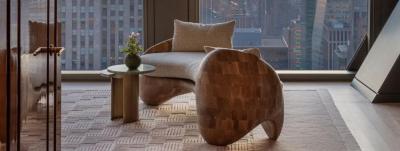Rare Paavo Tynell Lighting and Nordic Design Greats at Haddadin Design
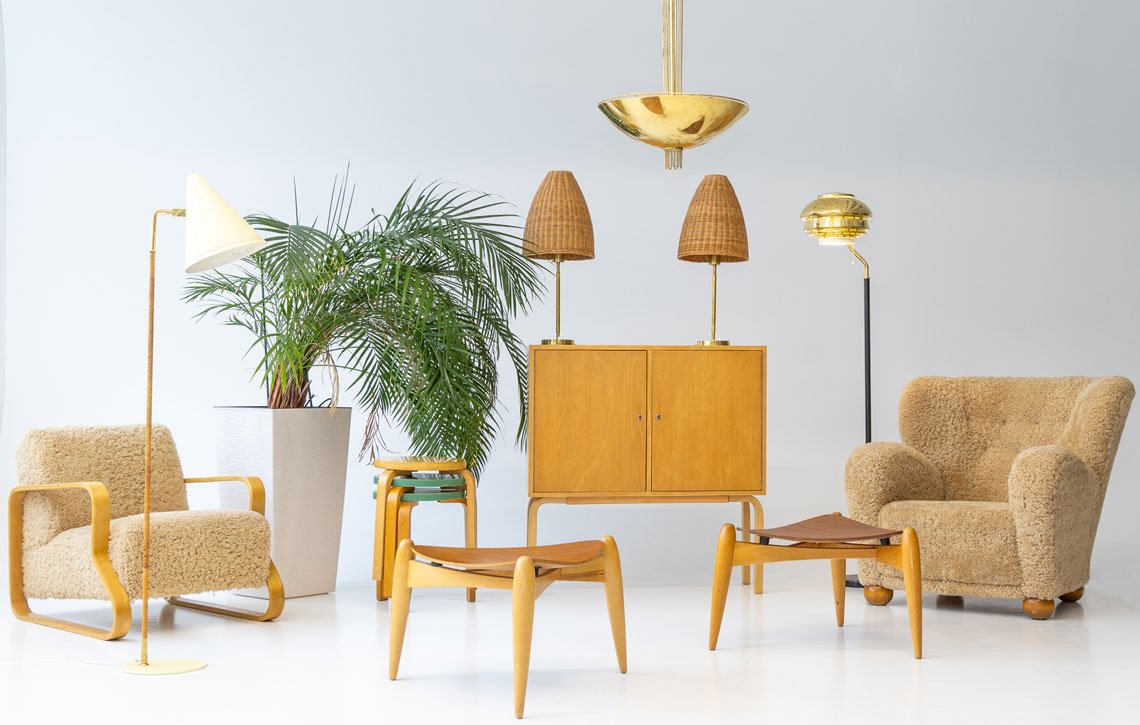 |
Some highlights from Haddadin Design’s outstanding collection of mid-century Finnish design: Alvar Aalto’s No. 44 lounge chair for Artek; “Nun’s Hat” wrapped rattan floor lamp by Paavo Tynell; Alvar Aalto 3-legged stools; Ilmari Tapiovaara ‘Tale’ 3-legged pressed plywood seat stools; Alvar Aalto model 810 birch cabinet topped with a pair of Maija Heikinheimo brass and rattan table lamps; Alvar Aalto model A808 brass floor lamp; Marta Blomstedt “Aulanko” lounge chair. Above, a rare commissioned Paavo Tynell chandelier in perforated brass with sculptural wire decoration at the canopy – see the listing photos for this gorgeous feature. |
Rare Paavo Tynell Lighting and Nordic Design Greats
at Haddadin Design
 | |
Faris Haddadin |
Haddadin Design in Helsinki has assembled an impressive collection of outstanding, authentic design objects in impeccable condition. They specialize in Finnish and Scandinavian mid-century modern design with a focus on the Finnish design giants Paavo Tynell and Alvar Aalto. Their collection also includes important pieces by Tapio Wirkkala, Lisa Johansson-Pape, Märta Blomstedt, Ilmari Tapiovaara, Aino Aalto, Birger Kaipiainen and Rut Bryk, and many other artists. Incollect spoke with Faris Haddadin, who co-owns the business with his brother Shadi Haddadin, about their passion for Scandinavian Mid-Century design and nearly encyclopedic knowledge of Paavo Tynell's lighting designs.
by Benjamin Genocchio
Photography by Shadi Haddadin
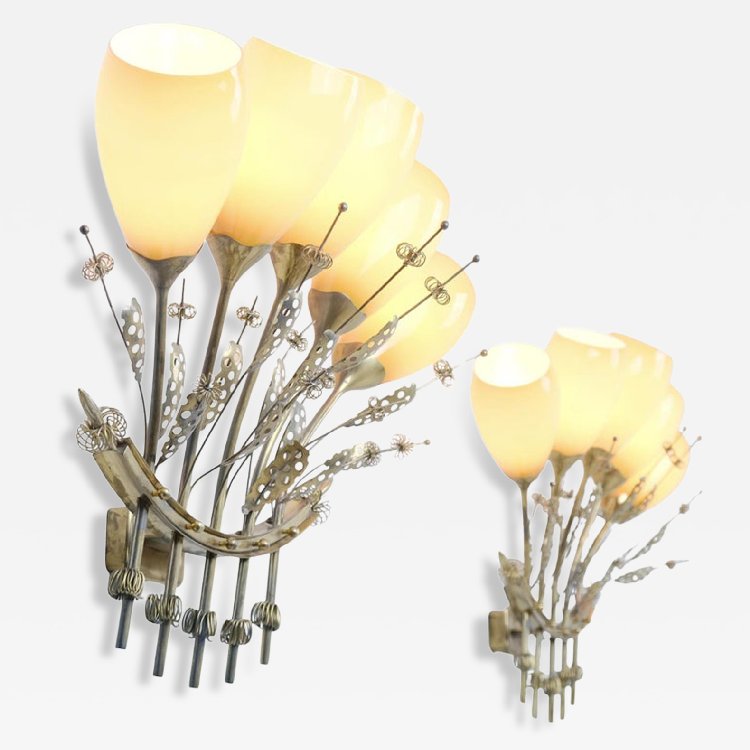 | 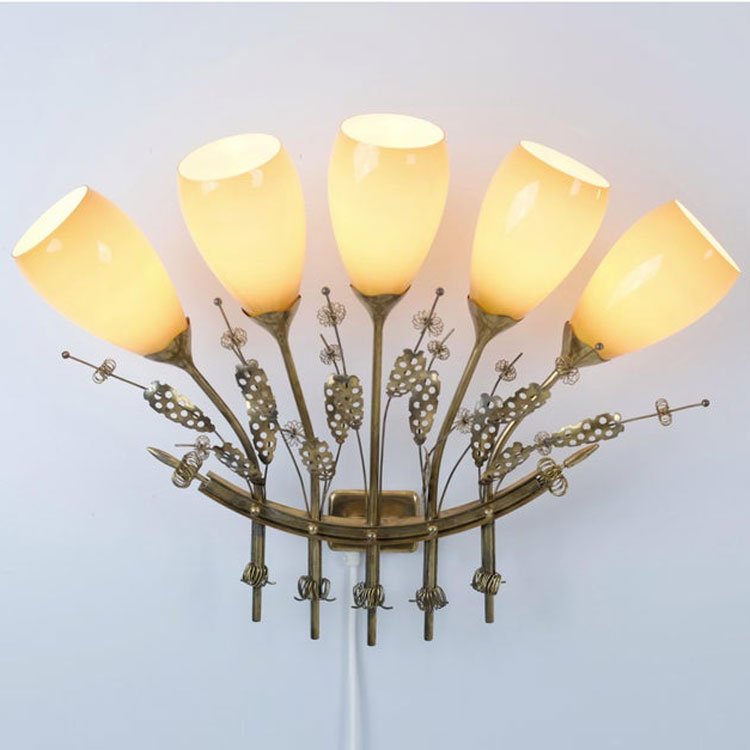 | 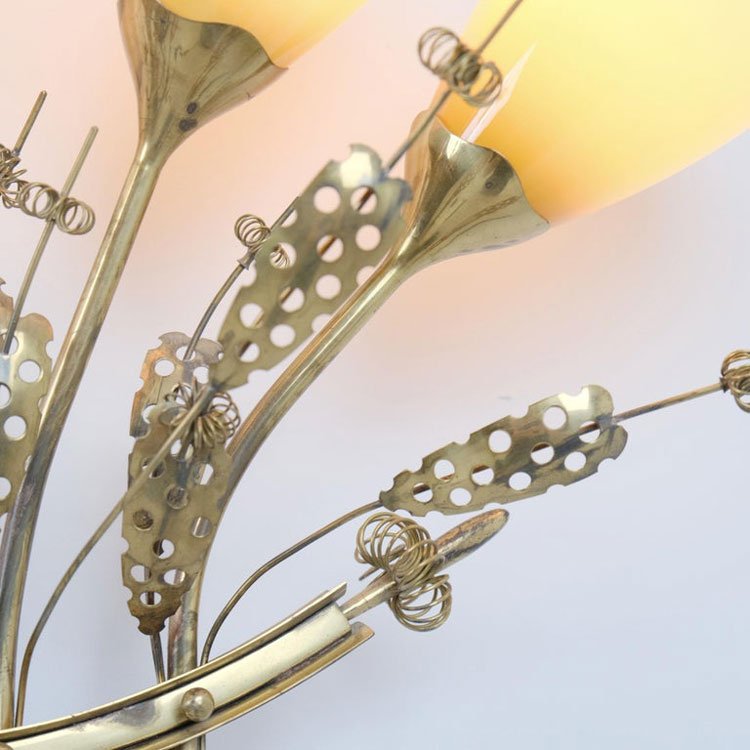 | ||
| “Just when you think you’ve seen every iconic Tynell design, this extraordinary pair of wall lamps emerges . . .” Acquired from a private residence outside Helsinki, these were a custom commission from Taito Oy, as evidenced by archival drawings. Impressive in scale, they measure over 27” each and feature a rare detail - perforated solid brass leaves, rather than the typical mesh style leaves. | ||||
You have an outstanding inventory of Paavo Tynell lighting, including many designs not found elsewhere. How and where did you find these models?
Tynell is by far our favorite Finnish designer. He is in a class of his own, and many people are just now realizing what a tremendous designer he really was. As our energy is always heavily focused on him, we naturally acquire more and more pieces. Finland is a small country, and we're a prominent dealer, so we are regularly offered Tynells from sellers. We are also frequently entrusted to sell pieces on commission, which is another material source.
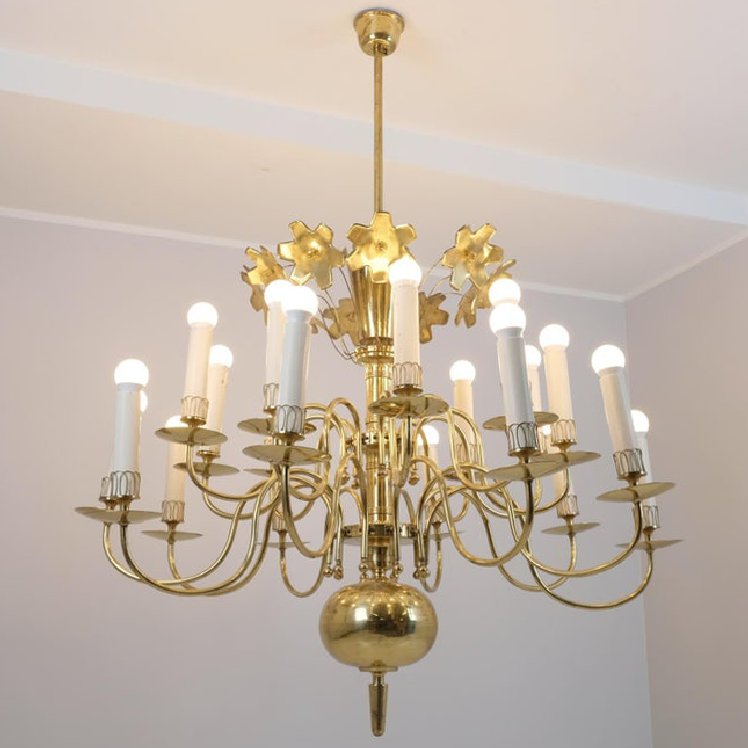 | 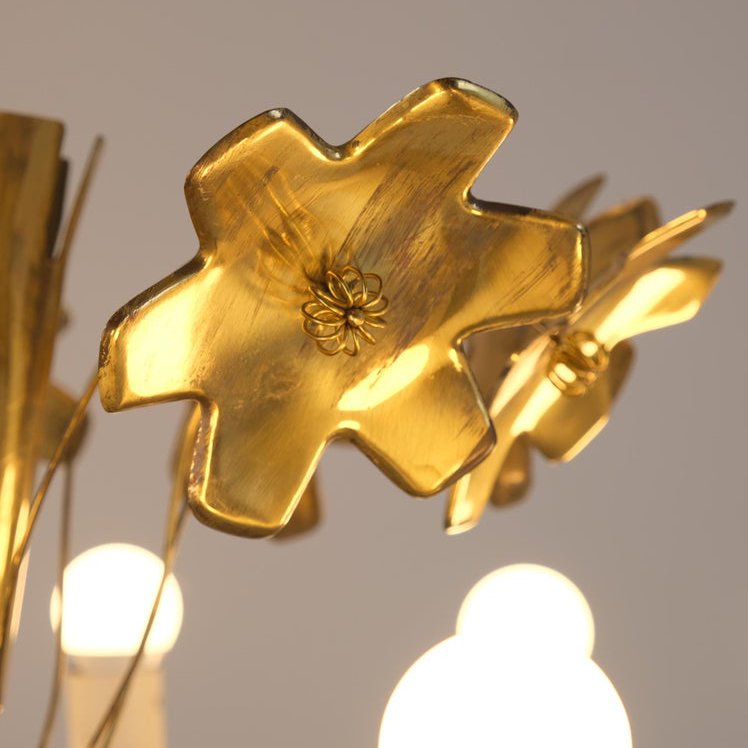 | |
| Monumental in size with details to match, this 1950s Paavo Tynell masterpiece was commissioned for the old Keski-Lahti “Wood Church.” All brass with twenty arms in two tiers, brass wire loop candle holders, and a ring of brass flowers on delicate brass wire stems that reflect the light. | ||
Is there still a good amount of inventory in private hands?
Yes. A large number of exceptional, well-provenanced works are just now beginning to surface due to increased market interest and a growing appreciation for his designs. Some of these pieces were unique commissions, so they are rarely seen or known about. He had much more to offer than the ‘Snowflake’ models for which he is most famous.
Tynell’s Table Lamp Model 5068 in brass, birch, and rattan really caught my eye. Tell us about this design.
Tynell produced practical and functional lamps, as well as decorative lamps. The 5068 fits between these two categories. It of course serves its function as a lamp while also making an aesthetic statement in an interior in a very subtle way. An interesting fact is that this lamp was actually designed in the 1940s and was in production well into the 1950s. It also acquired a different model number (9026) later in the production period. My brother Shadi wrote an extensive blog covering Tynell's model numbers — he is a real expert in this area. You can find it on our website at haddadin.fi, and I encourage all serious Tynell collectors to have a look at it.
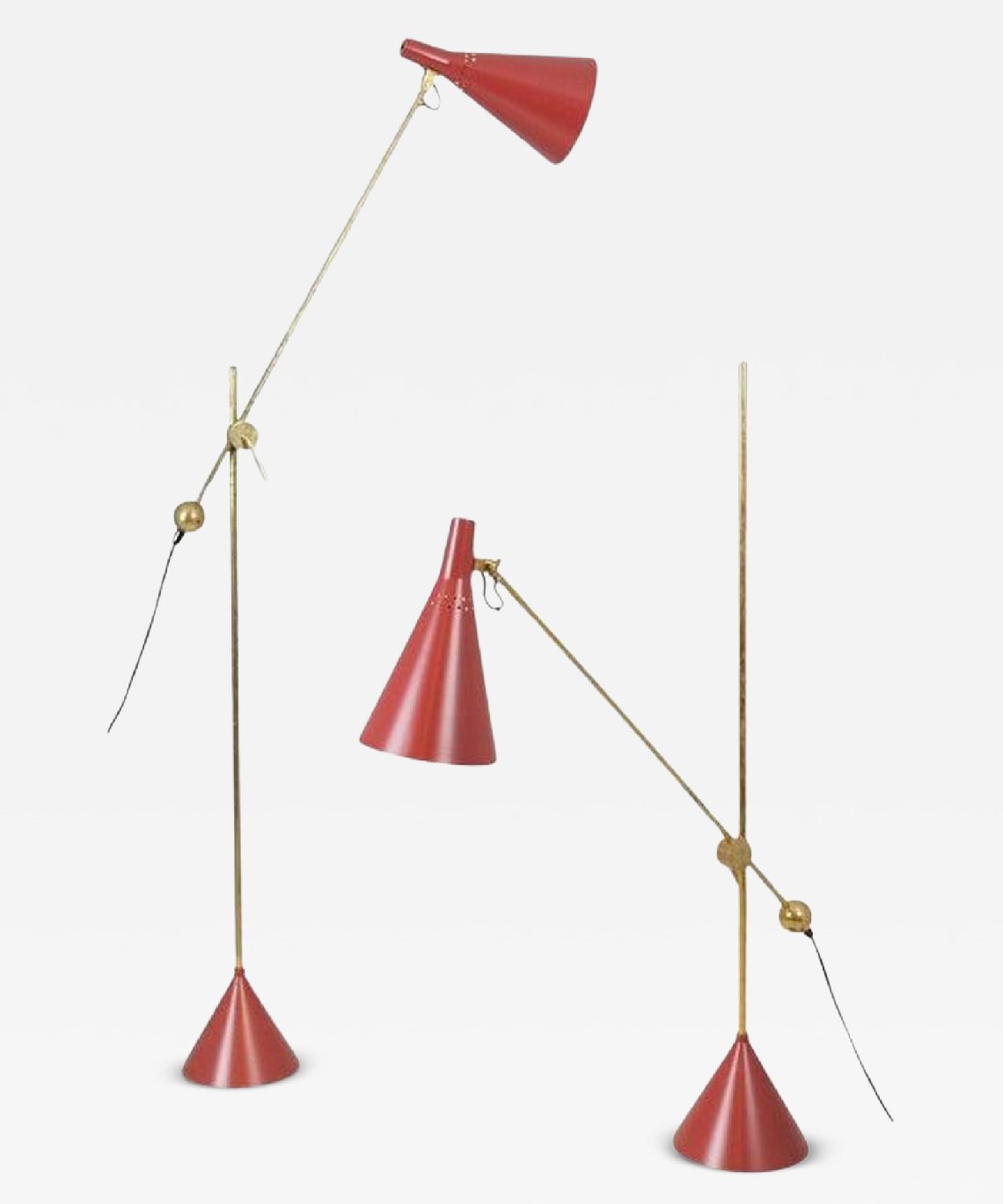 | 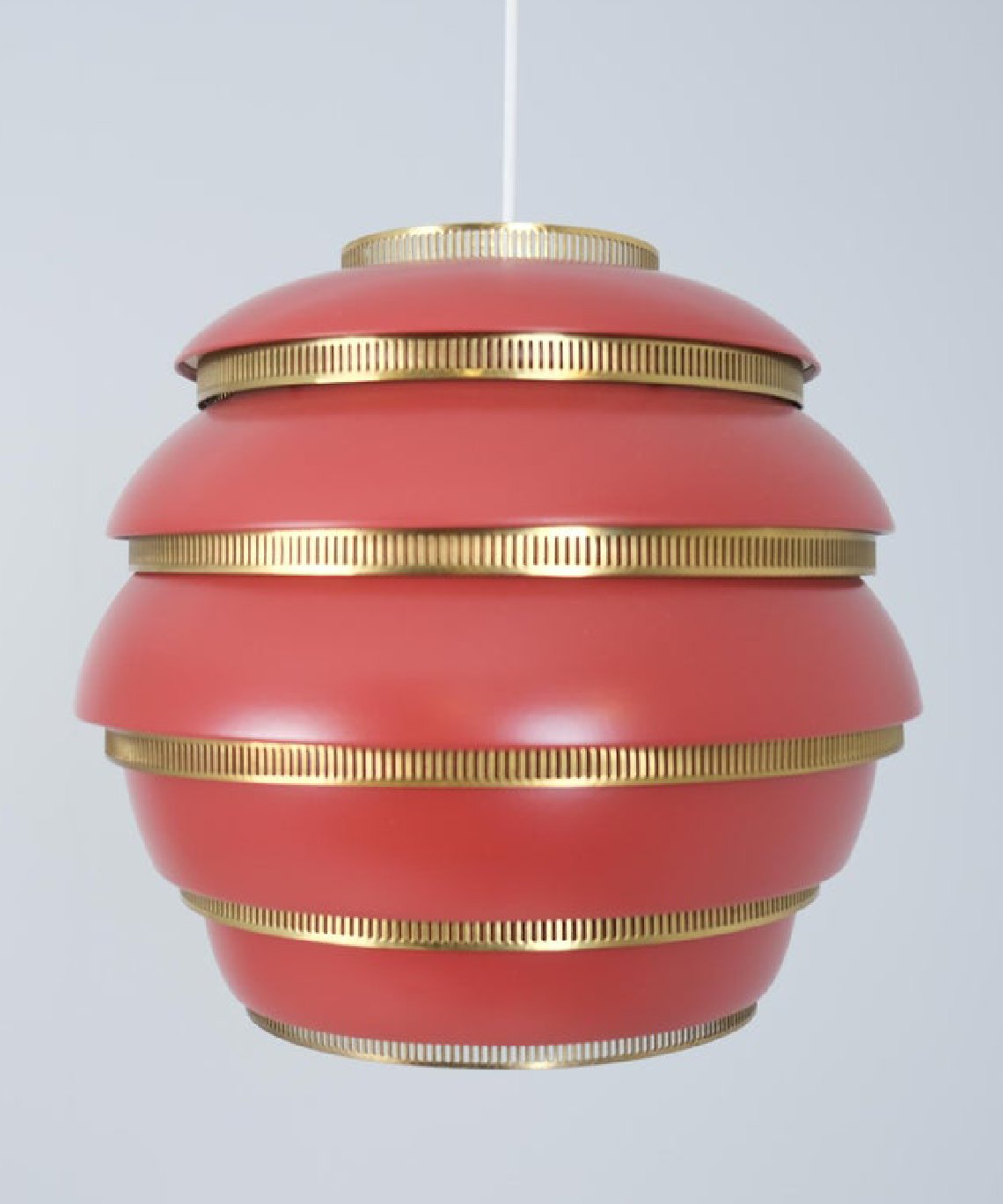 | |
| Left: A pair of iconic Tapio Wirkkala floor lamps, model K10-11, with adjustable height and adjustable shade position. Finland, 1950s Right: Alvar Aalto "Beehive" pendant, model A331. Finland, 1953. A design so ahead of its time that 70 years after its creation, it still has a futuristic feel. | ||
How do you authenticate Tynell lamp designs?
I'm glad you asked about this, as authenticity is everything at Haddadin Design. Unfortunately, there are many counterfeit or incorrectly attributed lamps on the market today. We pride ourselves on educating the general public on identifying original, authentic Tynells through our videos, posts, and blogs. We have an extensive collection of archive materials and catalogues that aid us in this mission. However, the most important factor in the authentication process is our hands-on experience, as we thoroughly investigate each item from top to bottom before offering it for sale. Examining catalogue pictures alone is not enough for proper authentication.
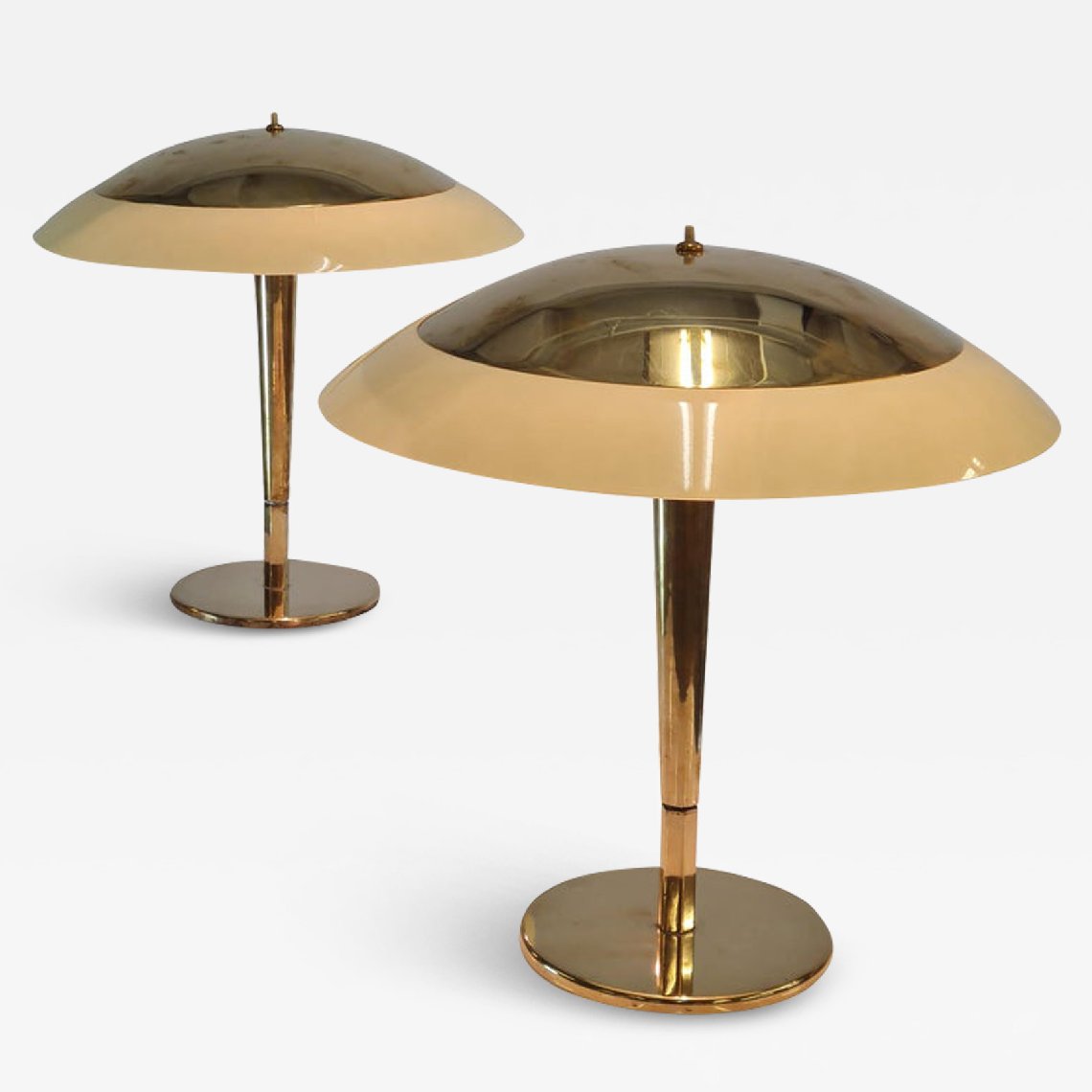 | 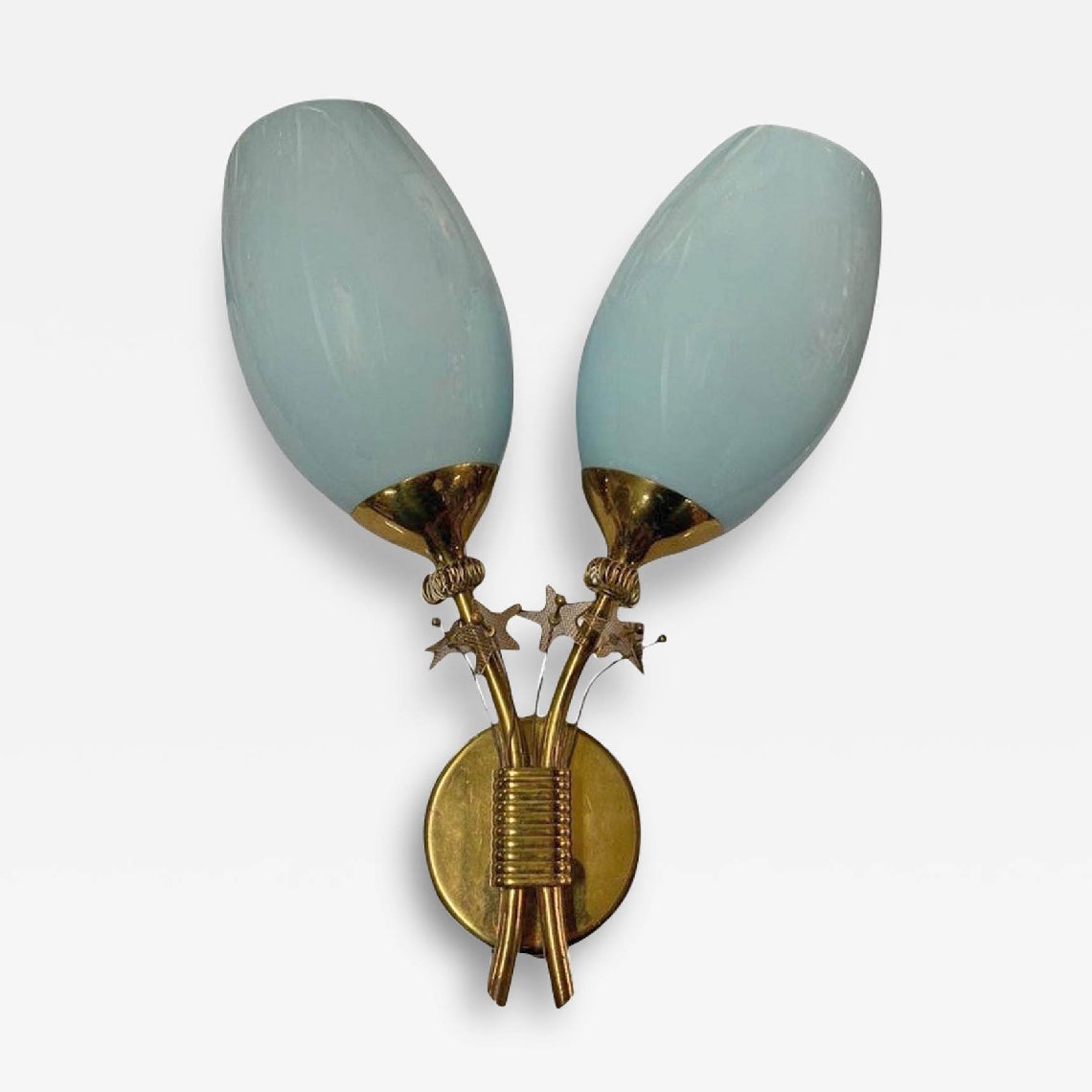 | |
| Left: An elegant pair of Paavo Tynell ‘Umbrella’ table lamps with mouthblown champagne color glass and brass cap, stem, and base. Right: This rare Paavo Tynell wall lamp has lovely pale blue glass and brass mesh star decorations. The blue glass becomes white in tone when the fixture is lit. | ||
How do you see Tynell in relation to 20th-century lighting design?
He is undisputedly one of the greatest light fixture designers who has ever lived. One cannot really even discuss 20th-century lighting design without taking into account Tynell's works. They are, simply put, timeless masterpieces of design that are as fresh and vibrant today as they were almost a hundred years ago. Tynell's modern light fixtures also fit into today's interiors exceptionally well, and they will continue to do so for centuries to come.
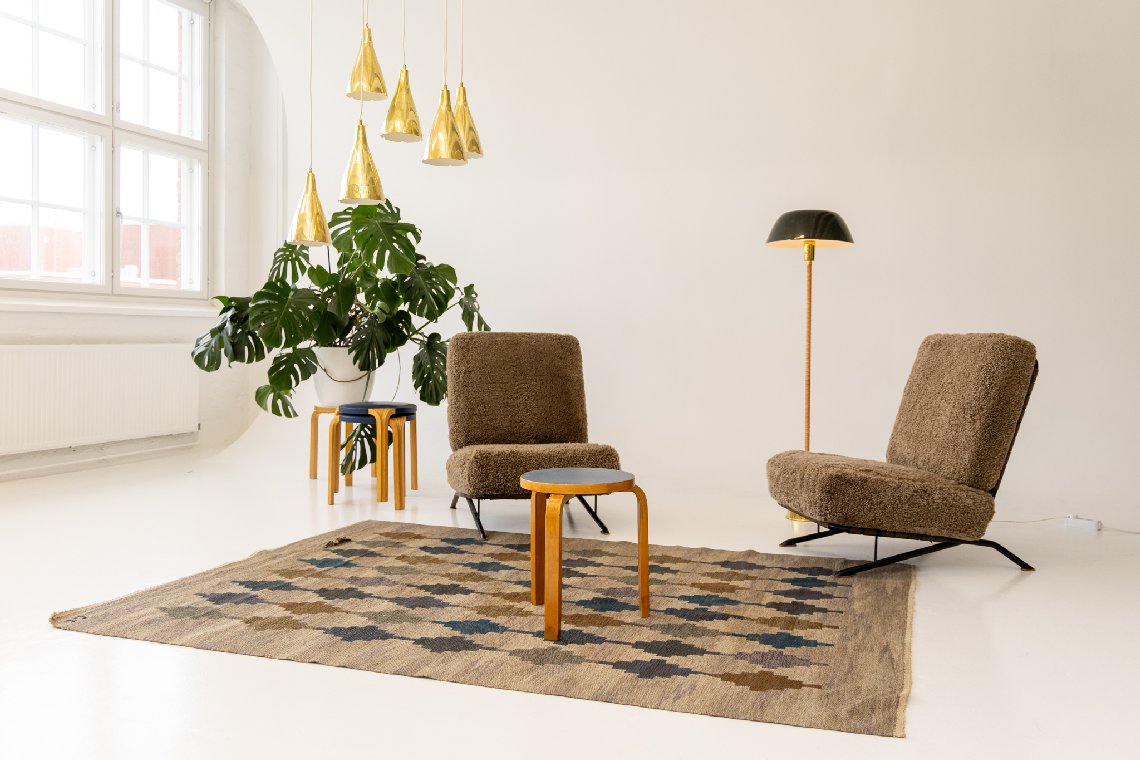 |
These 1950s lounge chairs in natural sheepskin by Ilmari Tapiovaara were commissioned for a private residence. Tapiovaara had quite a lot of commission work through his interior design office. In an article titled “A chair is not just a seat – it is the key to the interior,” Tapiovaara emphasizes the importance and attention he paid to chairs. To him, a chair was the beginning of a chain reaction that helped the other phases of the interior decoration. The stacked stools are Alvar Aalto’s X600 model, with beautiful fan-shaped birch legs and a padded leather seat, circa 1960s. In the foreground, Aalto’s best-known stool, the earlier model 60, designed in the 1930s and retailed globally by Artek. Steamed bentwood birch legs and laminate top, various colors available. A Paavo Tynell 1994 series chandelier has perforated brass bell-shaped lights with notched edges. This model came in configurations from 3 up to 12 lights with adjustable cord lengths; we currently have a 9-light version available. |
 | |
| Shadi Haddadin, expert on the designs and history of Paavo Tynell |
What was so special about him?
He dared to be different and introduced elements never seen before in lighting design. For example, the incorporation of natural elements in his works, such as floral decorations and organic forms like the seashell, antlers, and snowflakes, or mimicking the night sky through his perforated and brass surfaces.
How do you know so much about Tynell?
Thank you for the compliment on our knowledge of Tynell’s lighting. At Haddadin Design, we apply the Japanese concept of "Kaizen", that of continuous self-improvement, day in and day out. To be successful in business and in life, one must always keep striving and learning. Our true Tynell expert is my brother — few, if any, know as much about Tynell as he does — there is no better authority on Tynell lamps. He examines every Tynell lamp that we sell with extreme thoroughness.
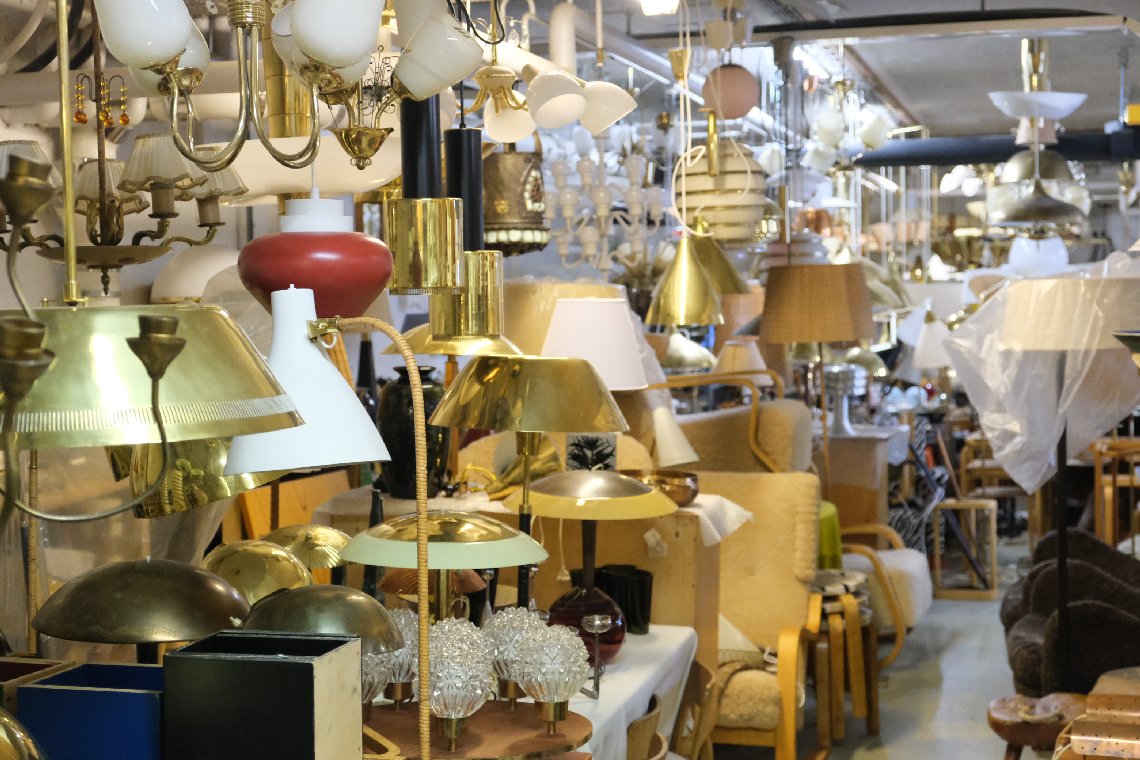 |
A Nordic design treasure trove. We love it all and are continually amazed to see how it works beautifully with nearly every style of interior. |
How did you get into the business?
We did not start as a company specializing in design or high-end objects. We operated as a small buy-and-sell secondhand shop, clearing out estates and selling anything and everything. Competing in Kallio, the urban district of Helsinki, which is dotted with flea markets, boutiques, and secondhand shops, taught us many things: resourcefulness, grit, honest trade, and sharp instincts. The move to specialize in design began around 2017 when we started selling at international auctions, mainly in Europe. We then transitioned to an online sales model targeting interior designers, collectors, and architects.
What is the secret to the success of 20th-century Scandinavian designers?
Finland and Scandinavia have been known and highly regarded for fresh and innovative mid-century modern design since the 1950s. Top designers such as Alvar Aalto, Tapio Wirkkala, Timo Sarpaneva, Gunnel Nyman, and Birger Kaipiainen continue to be important in the design market both locally and internationally. They designed affordable, practical, convenient objects as well as rare collectible pieces that fetch record prices. They are popular at all market levels.
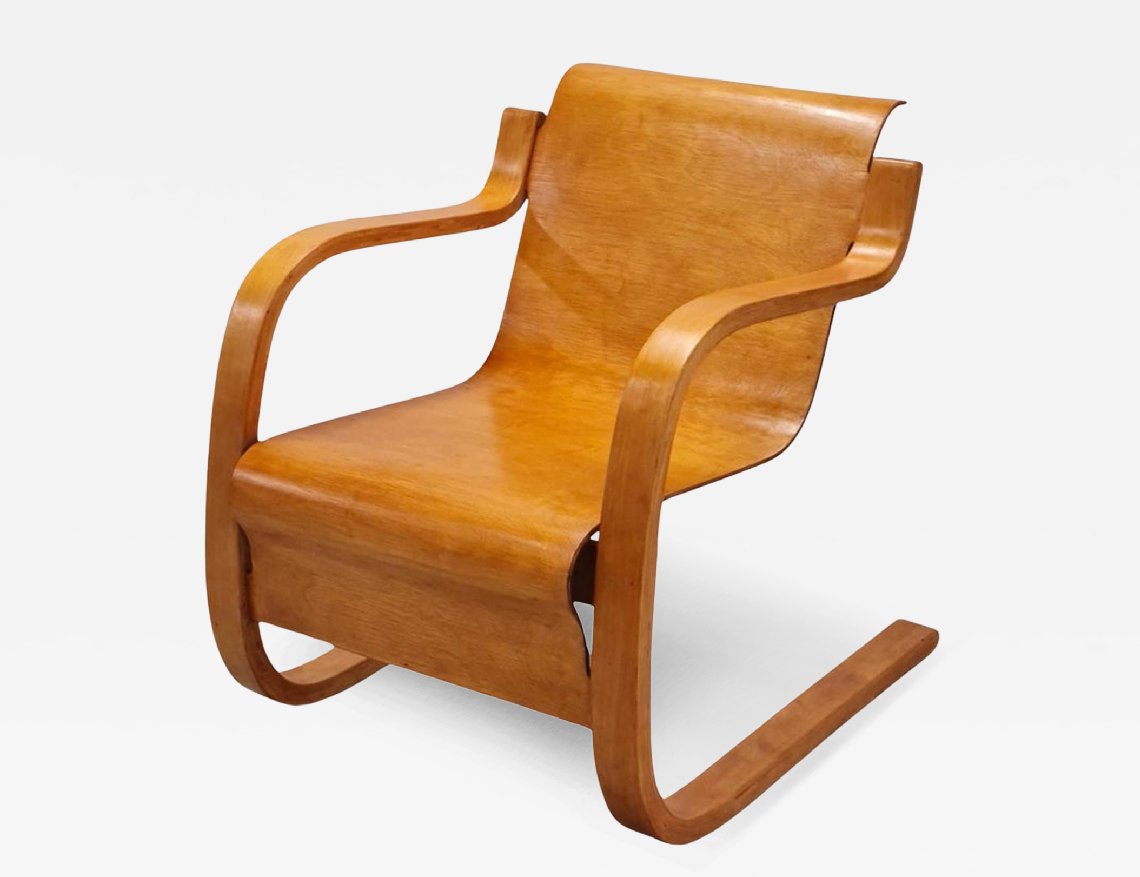 | ||
| Left: A pair of extremely comfortable armchairs with curvaceous lines by Runar Engblom in chocolate brown sheepskin. Designed for the Vaakuna Hotel in Helsinki, which was built for the Helsinki Summer Olympics in 1952, it featured the best of Nordic design, with lighting by Paavo Tynell and these iconic chairs. Right: Regarded as a masterpiece of design, Alvar Aalto’s model 42 birch bentwood chair, originally created in the 1930s for the Paimion Parantola Tuberculosis Sanatorium, helped pave the way for Aalto's international breakthrough with his functionalist furniture design. One of the finest and sturdiest of these chairs we have had over the years, it has a beautiful patina and is stamped, making it a fine collector’s piece. | ||
Which other designers from this mid-century period in Scandinavia deserve more attention?
Gunnel Nyman, Lisa Johansson-Pape, Aino Aalto, Ilmari Tapiovaara, Toini Muona, Runar Engblom, Werner West, Carl-Johan Boman, Märta Blomstedt, Kaj Franck, Heikki Turunen, and Rut Bryk, to mention a few. All of them have contributed to Finnish modern design, either through teaching (Werner West, Runar Engblom, Kaj Franck), manufacturing (Carl-Johan Boman), or simply their pure genius. Gunnel Nyman was one of the most versatile designers and is greatly underappreciated. She mastered various mediums: glass, ceramics, metalwork, furniture, textiles, and lighting design. Her life was dramatically cut short by her untimely death at the age of 39, an event which unfortunately contributed to attributing a lot of her works to other designers.
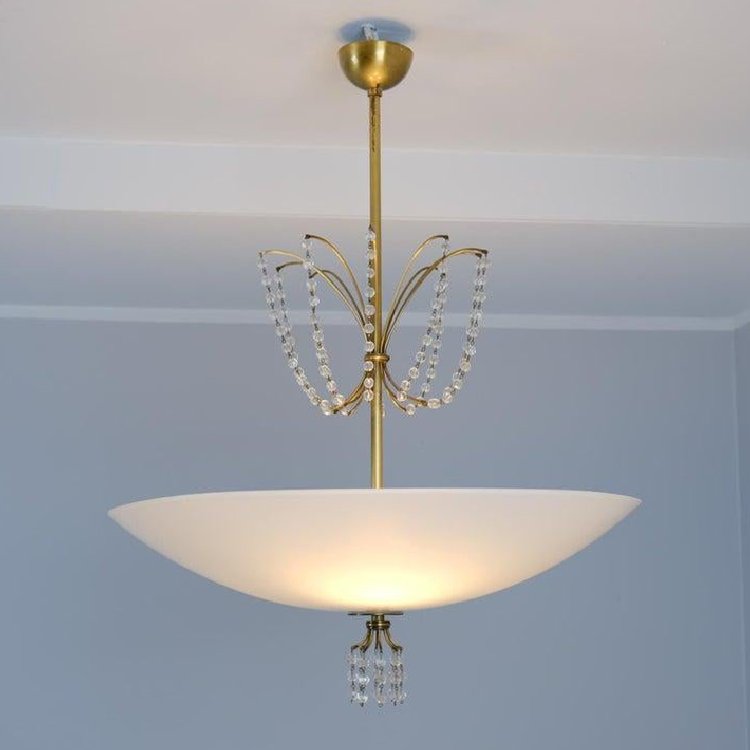 | 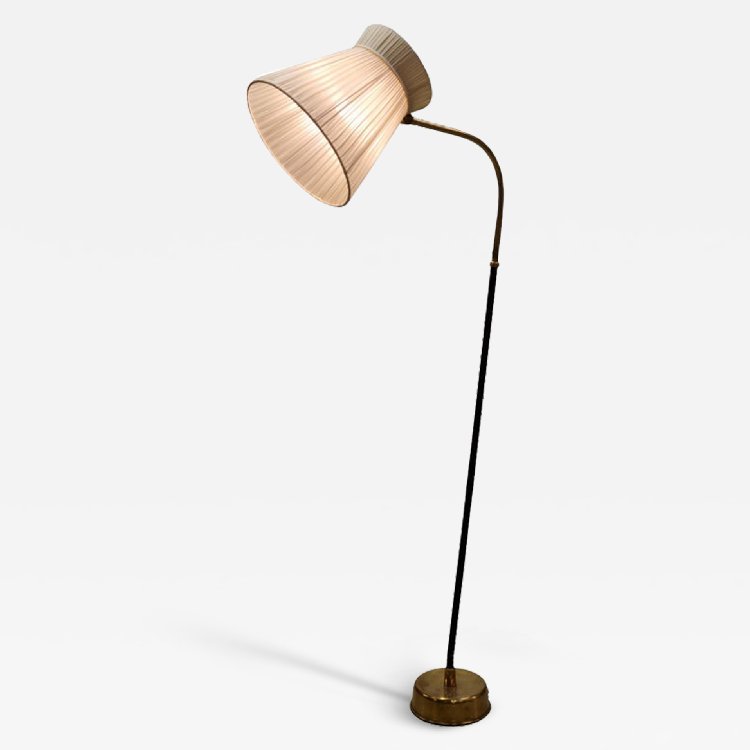 | |
Left: This Lisa Johansson-Pape chandelier features crystals that hang like raindrops and are beautifully illuminated by the up-light from inside the glass shade. In brass, blown glass, and crystal, circa 1950s. Right: Floor lamp model 2063 by Lisa-Johansson-Pape, brass with gracefully curved brass and black nylon-wrapped stem and adjustable silk shade. Manufactured by Orno in the 1950s. | ||
Lisa Johansson-Pape is another underrated designer. What distinguishes her work?
Lisa Johansson-Pape may not be so well known in the United States, but she is widely regarded as one of Finland’s most important mid-century lighting designers, known for combining strict functionality with quiet elegance. She believed that lighting must first serve a practical purpose, and only then would she consider beauty, a principle visible in the clean, restrained forms of her lamps. Working mainly with manufacturers Orno and Stockmann-Orno, she used durable materials such as brass, enamelled steel and glass, softening their modernist geometry with gentle curves, subtle perforations and diffused light. Her designs —ranging from intimate table lamps to large church, hospital, and ship installations — are versatile yet finely crafted, showing a balance of industrial production and artisanal finish. Many pieces were inspired by nature’s organic shapes and were built to last, which is why so many have survived today in excellent condition and are much sought after.
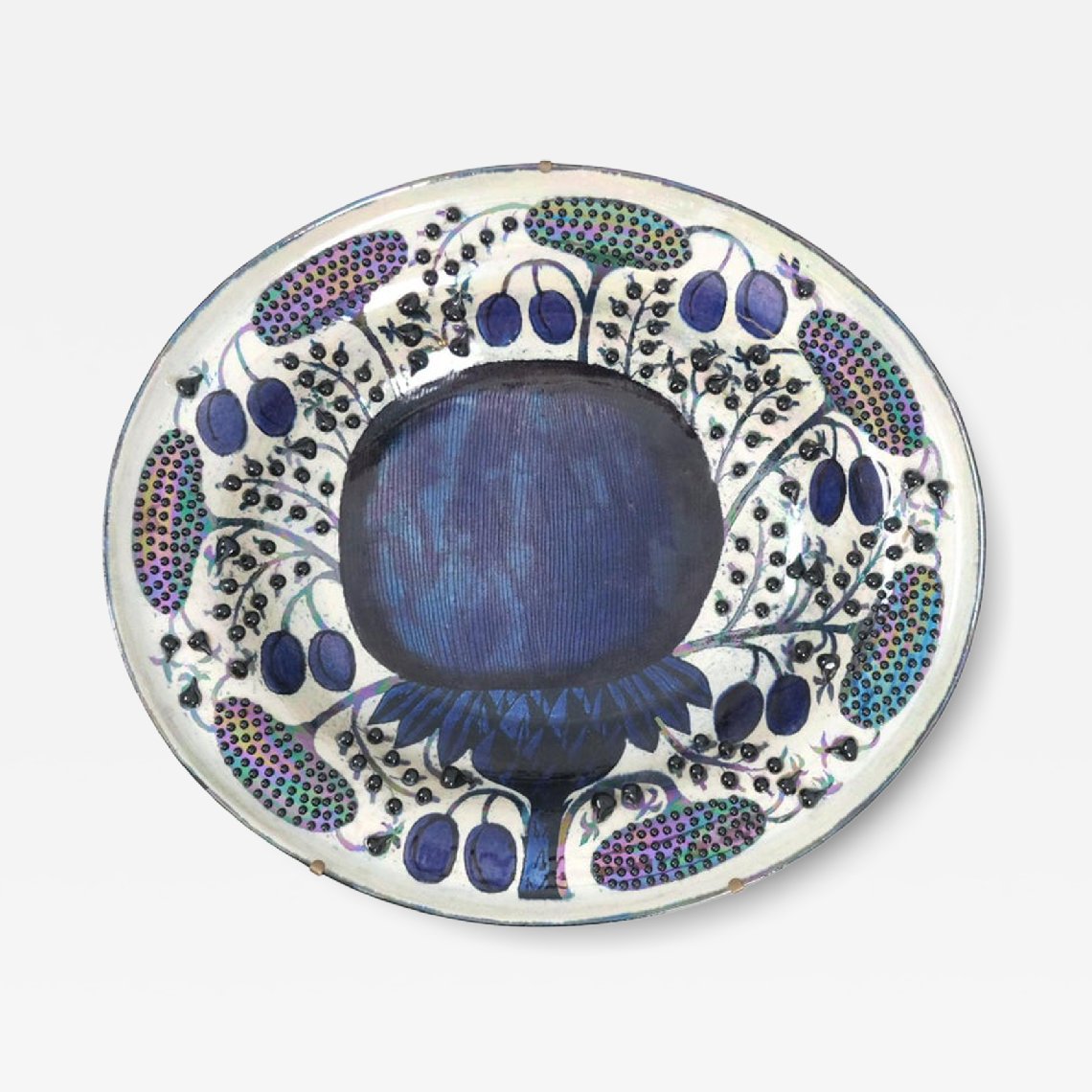 | 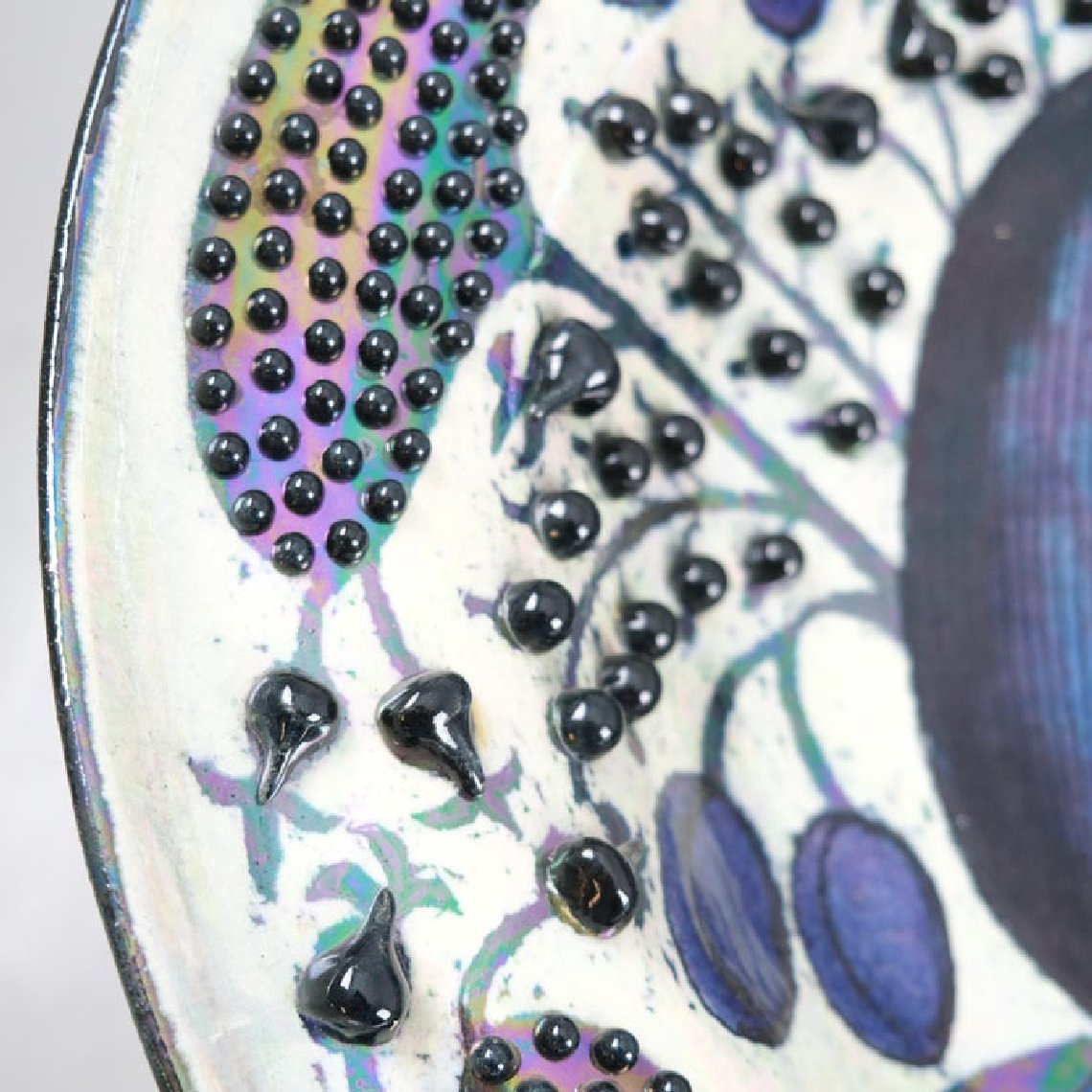 | |
| Birger Kaipiainen for Arabia large ceramic plate with beaded decorations and iridescent glazing, circa 1970s. Birger Kaipiainen (1915–1988) is celebrated as a master of decorative ceramics, renowned for his richly colored and ornamental works. Drawing from fantasy and fairytales, his art stood in deliberate contrast to the minimalist ideals prevalent in the mid-20th century. Lushly decorated with plums and berries and just over 2 feet wide, this would make a spectacular display piece hanging over a console table or sideboard. | ||
Birger Kaipiainen is gaining a following in the United States. Tell us about him and his designs.
Birger Kaipiainen was a master of decorative ceramics and one of Finland’s most celebrated designers. In an era when Finnish design leaned toward minimalist simplicity, Kaipiainen stood defiantly apart. A romantic at heart, he embraced lush ornamentation, surreal symbolism, and a deep emotional undercurrent in everything he created. His works — rich, layered, and often dreamlike — feature recurring motifs like birds, butterflies, fruit, flowers, and stylized women, often accented with glass beads and intricate detailing. He once said, “I decorate, decorate, decorate. That’s my job. A world without decoration is a dead world.”
Where do you see your business in 5 years?
Over the next five years, we will continue to follow the same core values that have led us to where we are today, with a few additions to our sales channels. Opening a gallery space that does full justice to our collection of Finnish mid-century modern design is on our to-do list. International fairs will also be considered when the time is right to add more face-to-face interaction with customers. Although we are still relatively new in the online space, we aim to gradually strengthen our role as true ambassadors of Finnish design — showcasing its timeless quality and sharing it with the global design community.
 |
Discover More From Haddadin Design on Incollect
 |







